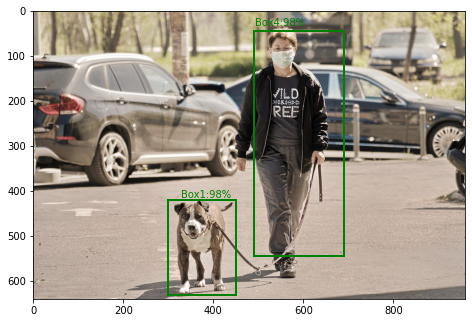The clear() method of java.nio.FloatBuffer Class is used to clear this buffer. This method set the position and limit equal to zero and capacity respectively and discard the mark. This method should be invoked when there is any necessity of sequence of channel-read or put operations. It means that if the buffer needs to be read then clear() method makes the buffer ready and set the position to zero. For example:
buf.clear(); // Prepare buffer for reading in.read(buf); // Read data
The method does not actually erase the data in the buffer, but it is named as if it did because it will most often be used in situations in which deletion might as well be the case.
Syntax:
public final FloatBuffer clear()
Parameters: The method does not take any parameters.
Return Value: This method returns this FloatBuffer instance after clearing all the data from it.
Below are the examples to illustrate the clear() method:
Example 1:
// Java program to demonstrate// clear() method import java.nio.*;import java.util.*; public class GFG { public static void main(String[] args) { try { float[] farr = { 2.5f, 3.5f, 4.5f, 6.7f }; // creating object of FloatBuffer // and allocating size capacity FloatBuffer fb = FloatBuffer.wrap(farr); // try to set the position at index 2 fb.position(2); // Set this buffer mark position // using mark() method fb.mark(); // try to set the position at index 4 fb.position(4); // display position System.out.println("position before reset: " + fb.position()); // try to call clear() to restore // to the position at index 0 // by discarding the mark fb.clear(); // display position System.out.println("position after reset: " + fb.position()); } catch (InvalidMarkException e) { System.out.println("new position is less than " + "the position we " + "marked before "); System.out.println("Exception throws: " + e); } }} |
position before reset: 4 position after reset: 0
Example 2:
// Java program to demonstrate// clear() method import java.nio.*;import java.util.*; public class GFG { public static void main(String[] args) { float[] farr = { 2.4f, 105.4f, 13.9f, 23.45f }; // creating object of FloatBuffer // and allocating size capacity FloatBuffer fb = FloatBuffer.wrap(farr); // try to set the position at index 3 fb.position(3); // display position System.out.println("position before clear: " + fb.position()); // try to call clear() to restore // to the position at index 0 // by discarding the mark fb.clear(); // display position System.out.println("position after clear: " + fb.position()); }} |
position before clear: 3 position after clear: 0
Reference: https://docs.oracle.com/javase/9/docs/api/java/nio/FloatBuffer.html#clear–

